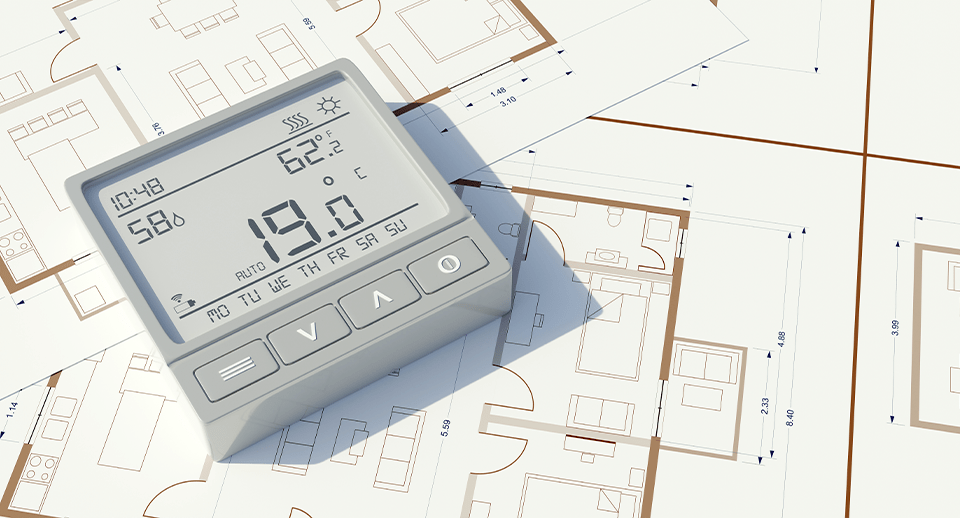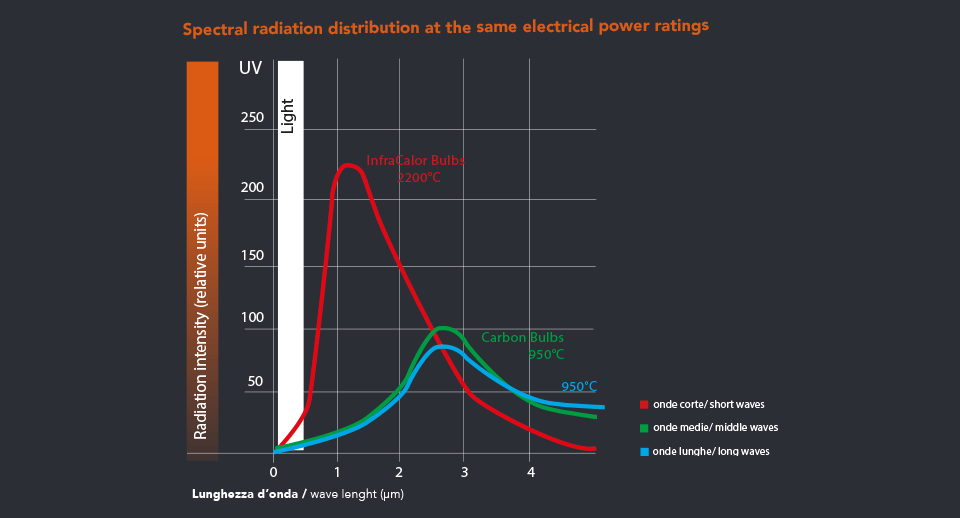How much does infrared heating consume, and what are its advantages compared to conventional heating systems?
It is easy to determine how much an infrared heater consumes, just by doing a few simple calculations. However, the most difficult part is to put consumption in a broader context, to compare consumption and to evaluate the results in the face of variable energy prices, which fluctuate constantly. In addition, possible installation and maintenance costs must also be considered, which can radically change the outcome of the entire evaluation.
Let’s try to make a few brief considerations, to understand what the real advantages of an infrared heating system are!

How much does an infrared heater consume?
To determine how much an infrared system consumes, we must first know the power of the system, which is measured in watts. Typically, a domestic infrared panel has a power rating that can range from 300 W to 1,000 W on average, while a panel for large industrial environments, or for outdoor commercial spaces, can reach over 6,000 W of power.
However, knowing the power of the system is not enough. Because, to find out how much we are spending, we need to know how much energy the system consumes in relation to a time interval. In fact, the price of energy is calculated by multiplying the kW consumed in one hour (kWh) by the current unit cost of electricity.

How much do you spend with infrared heating?
Let’s start with this assumption: the current (December 2022) unit cost of electricity in the protected market is 0.501 €/kWh.
Given the above, let us look at a specific example; the calculation is easy:
→ If we consider a panel of about 1500 W power (which is equivalent to 1.5 kW), for one hour of use, that is 1.5 kWh.
→ To find out how much we spend per actual hour of use, we have to multiply these 1.5 kWh by the current unit cost of electricity, i.e. €0.501 per kWh
→ The result is €0.75. So – currently – with a 1,500 W infrared panel, we will spend around €0.75 per hour.
There is nothing like a comparison with another system to see how much an infrared heater consumes:
Heating with Star Progetti infrared heaters (No. 4 Heliosa 66 – 2 kW)
• Unit consumption: 2 kW/h
• Total consumption: 2 kW/h * 6h * 6 days * 4 = 288 kW
• Unit cost: €0.501 kW/h
• Total cost: €144.28
Heating with gas stoves (no. 3 stoves)
• Unit consumption (Gas) 1kg/h
• Total consumption: 1kg/h * 6h* 6gg * 3 = 108 kg • Unit cost: (cost of a 15kg cylinder) €40
• Total cost: €288
Heating with Star Progetti infrared heaters (No. 4 Heliosa 66 – 2 kW) |
|
| Unit consumption: | 2 kW/h |
| Total consumption: | 2 kW/h * 6h * 6 days * 4 = 288 kW |
| Unit cost | €0.501 kW/h |
| Total cost | €144.28 |
Heating with gas stoves (no. 3 stoves) |
|
| Unit consumption: | (Gas) 1kg/h |
| Total consumption: | 1kg/h * 6h* 6gg * 3 = 108 kg |
| Unit cost: | (cost of a 15kg cylinder) €40 |
| Total cost: | €288 |
The advantages of infrared heating
It is easy to see from the comparison that an infrared heating system can be very cost-effective compared to conventional heating systems, but some considerations must be made.
First of all, the current cost of electricity is much higher than normal: compared to the average in 2019, for example, the price has increased more than twice as much; at that time, the average unit cost was €0.199. Therefore, despite recent difficulties – and considering future adjustments – we can confidently say that infrared heating remains a cost-effective alternative to traditional heating systems.
If we then consider that infrared panels have a very low installation cost and do not need frequent maintenance, we can say that they are the ideal system for all those spaces that require high energy consumption for many consecutive hours each day. Thanks to the Local Warming approach, it is also possible to heat instantaneously, and very precisely, only those areas that need it, and only for as long as necessary, a very useful feature for heating outdoor spaces.
